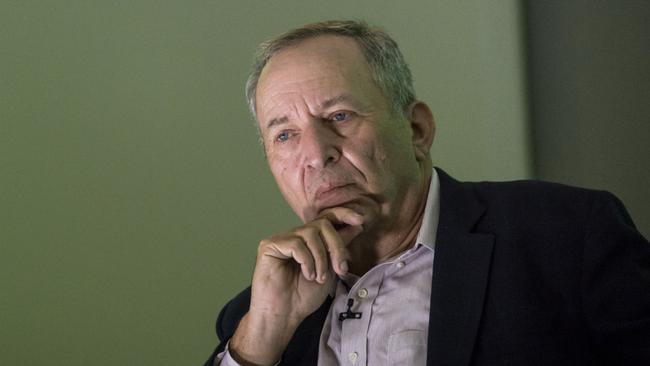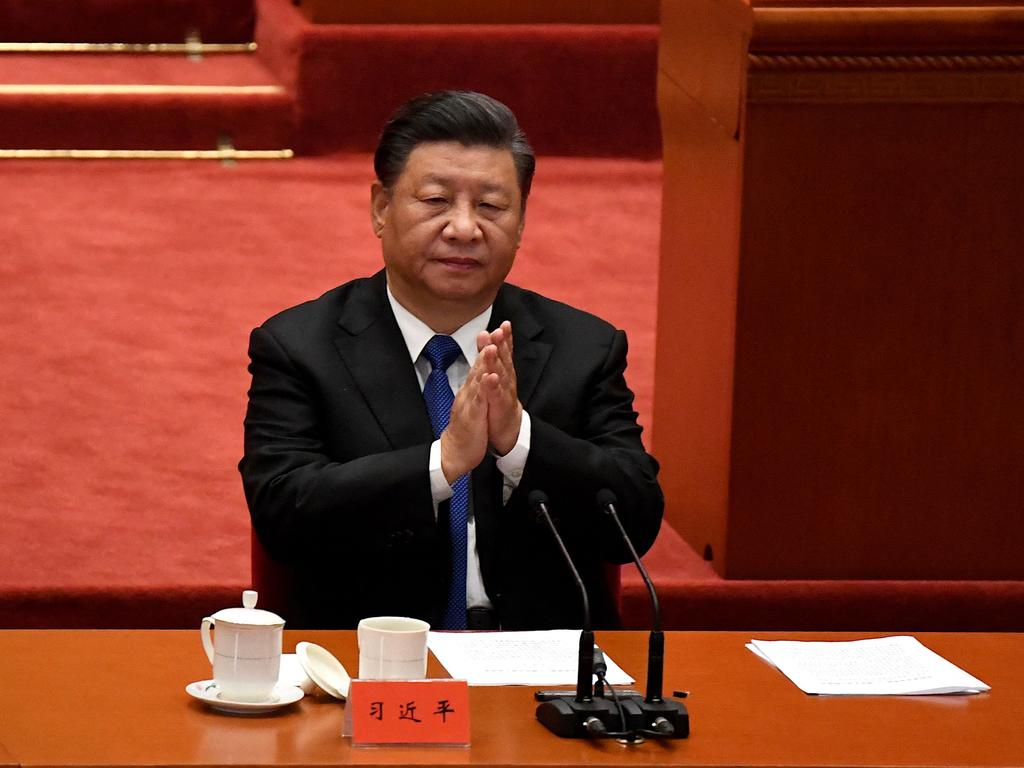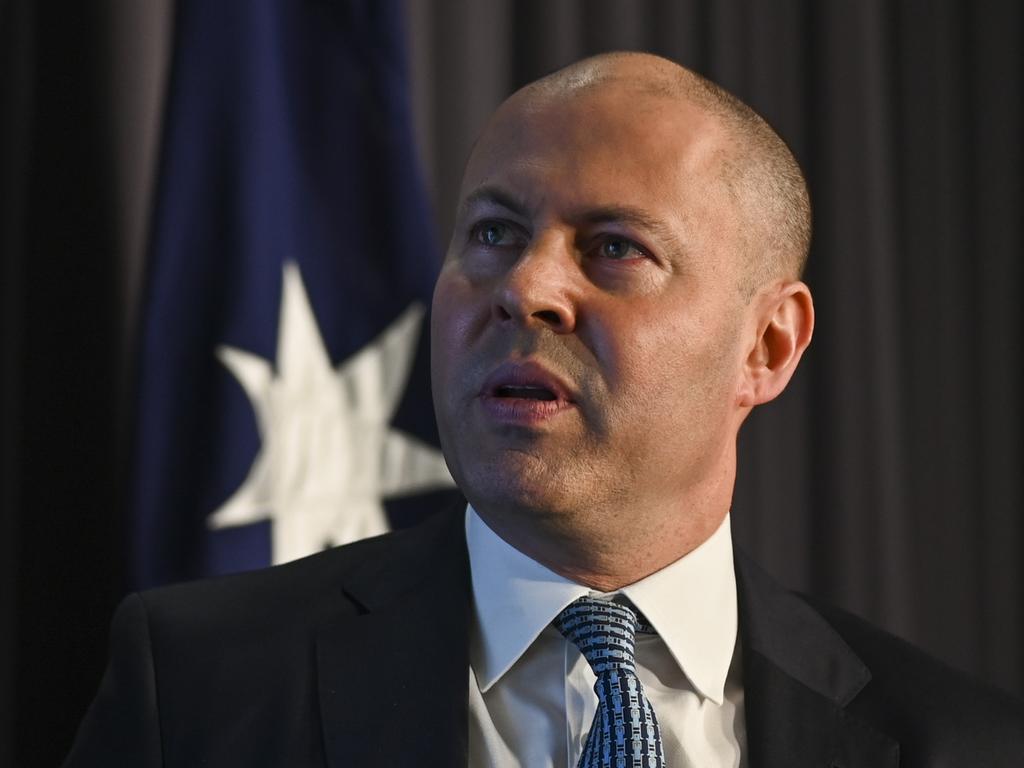Inflation genie is out of the bottle, says Larry Summers
Former US Treasury Secretary Larry Summers has slammed US policy makers for taking ‘big risks’.

Former US Treasury Secretary Larry Summers has slammed US policy makers for taking “big risks”.
Addressing the Citi Australian & NZ Conference on Wednesday, he said rapid growth in US consumer prices, wages, house prices and nominal GDP were unsurprising given the “postures” of fiscal and monetary policy.
“We embarked on a 15 per cent of GDP budget deficit stimulus program, in an economy that had a 2 or 3 per cent GDP gap – that’s a prescription for overheating – magnified by zero interest rates and a large quantitative easing program, as well as a $US2 trillion ($2.7 trillion) savings overhang,” he said.
“So today we are looking at a record level of labour shortage as measured by vacancies, a historic high quit rate and a 20 per cent housing inflation rate,” he said.
Most of this is yet to feed into official measures, so the “preponderant probability” is that the US faces inflation “way above” the Fed’s 2 per cent target “at least for some significant interval”.
“When you have inflation way above the Fed’s 2 per cent target and the Fed is not talking about raising the interest rate for a year and a half, you’re not doing much that’s going to contain an inflationary psychology,” he said.
What surprised him was the extent of supply chain bottlenecks and the reluctance of Americans to return to work despite the widespread availability of Covid vaccines.
Minutes from the Fed’s September board meeting were due early on Thursday. Last month the Fed said: “If progress continued broadly as expected, the committee judged that a moderation in the pace of asset purchases may soon be warranted.”
But while a “supply-side renaissance” was possible, it’s more likely demand growth will exceed supply growth, at a time when the economy is already “overheating”, according to Dr Summers.
At minus 0.5 per cent, the inflation-adjusted Fed funds rate was “vastly below the neutral rate”.
In his view US economic growth will be above its previous potential by the end of the year. That’s amid job shortages and the “great resignation” as workers left their jobs during the pandemic.
“You’d sort of expect that while that was happening, the normal rate of unemployment would have to go up, to accommodate all the switching (of jobs),” he said.
“When you start with way-above-target inflation, you run monetary policy way looser than neutral, in the face of an economy that’s probably above potential growth and below neutral for the unemployment rate, you’re setting the stage for a lot of issues on inflation.”
Asked how long before inflation expectations react, he said inflation had been “way above any concept of normal” for six months, and three-year inflation expectations were “way up”.
“If you look at what’s happened in the last month, break-even inflations in the market have started to move up. If you ask firms whether they plan on price increases, you’re at record highs, in terms of those that expect to be able to raise prices in the next six months.
“All of that says to me that we’ve got an increase in inflation expectations underway.”
And history showed the “single most salient number in helping consumers form inflation expectations is gasoline prices”, which are “way up”.
Optimists might say that as Americans flood back to work – increasing the supply of labour – they won’t increase their spending substantially, thereby creating anti-inflationary pressure.
“If it happens, it’s likely to be an increase in demand that roughly matches the increase in supply, and so there’s nothing likely to be terribly counter inflationary about it,” Dr Summers said.
People who say “inflation expectations are sluggish and anchored” were “forgetting how costly it will be if we allow them to rise and get out of control”.
“If we allow inflation expectations to get above 3 per cent, what we’ve learned is it will be extremely expensive to put them back. It seems to me that means you have to be extremely careful.”
It would be a mistake to be “too mechanical” about inflation expectations – “because if people think things are not under control then you’ve got a big problem”.
“If you wanted to do things in a way that would cause things to feel out of control, it’s hard for me to imagine how you would do better than record labour shortages, 20 per cent housing inflation, highest oil prices in eight years, government embarked on a major fiscal stimulus program, and the Fed deciding that it needs to take nine months to stop a major monetary expansion by buying bonds,” he said.
“So I don’t think we’re in a terribly rational or sound place. I think we’re taking big risks.”
In his view the Fed should have been tightening rates months ago.
“The single best number that people cited as an example of transitory inflation that was going to reverse itself was used car prices,” he said. “The preliminary data suggest they are turning back up, so there’s going to be another round of unusual inflation coming from used car prices.
Not only that, it’s coming with abnormally high demand, high volume, which suggests that it’s a demand shock.
But he said the Fed would watch real bond yields and financial markets very closely.
“I think it’s pretty complicated, because if break-evens take off, you’re likely to see a lot of deterioration in the equity markets – the Fed’s going to be awfully nervous about raising rates into weak financial conditions.
“So … there’s a window, and that window is not going to be open forever and they should have been moving towards tightening a few months ago.”








To join the conversation, please log in. Don't have an account? Register
Join the conversation, you are commenting as Logout